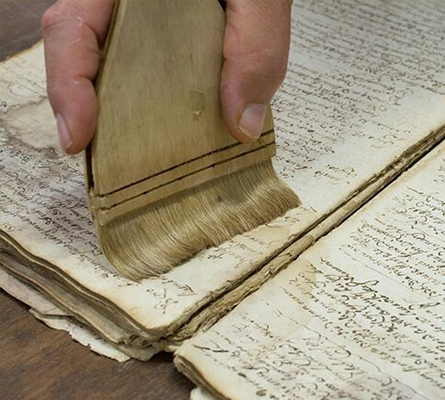
Documents Restoration
Your trusted and preferred restoration company should thoroughly dry and restore fire, smoke, and water damaged documents, books, and multimedia due to natural disasters and unintentional accidents. Fire and water are destructive elements that are very damaging to hard copy as well as electronic media documents. Fire gives rise to smoke odors and oily soot, while water and moisture promote mold growth. These elements must be removed promptly and completely prior to cleanup for best restoration results; otherwise, lingering smoke odors and mold will become a recurring problem.

Prompt Action
Wet books, flooded photographs, and water damaged documents are particularly prone to mold and warping. If the damage involves black water, contamination complicates the restoration process. Therefore, quick action is most important for optimal salvaging results.
Find Your Local “Restoration Renegades” Today

Methods
Specialized cleaning, cryogenic drying and vacuum freeze-drying are methods used for water damaged documents restoration. They are very effective and safe for hard copy material as well as data on magnetic media. As water is gradually removed, books and documents revert to their natural shapes, minimizing warping significantly.

Specialized Cleaning
Specialized cleaning refers to various cleaning methods applied to water damaged documents to safely help in the remediation process. They include the pre-treating or removal of dirt and debris before restoration techniques are applied.

Vacuum Freeze Drying
The freeze drying method is used to preserve fragile items from further damage as well as protect them during transport to the restoration site. The process begins with completely freezing the items and decreasing pressure so that the frozen water in the documents or books transitions from solid to gas, bypassing the liquid phase. This process is very effective for preserving and restoring water damaged documents, books and other media.
Cryogenic Drying
Cryogenic drying is similar to vacuum freeze-drying, with some variation. There may be slightly more moisture in this restoration method, with a short liquid state potentially involved, unlike the vacuum freeze-drying method that is literally dry. The benefit has to do with a better preservation of shape and less warping of books and documents. This method can also be applied to water damaged leather. Although this method is more costly, it can be justified when dealing with restoring rare books or valuable documents.
Search for, and find, your preferred company now, based on zip code or "select service." Through Restoration Renegades, you will find the right company for you!



